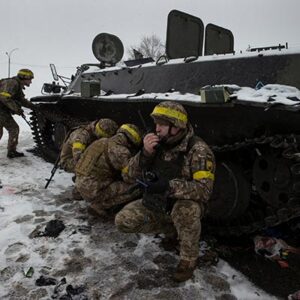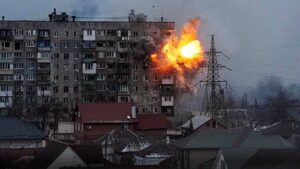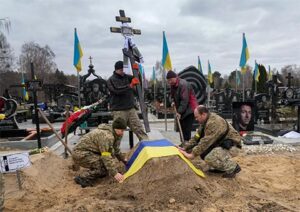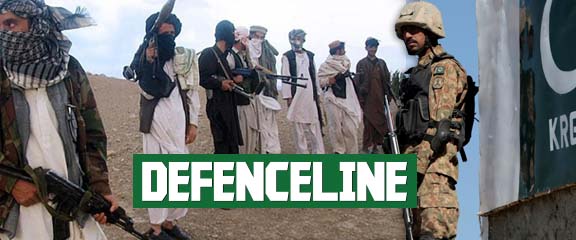War is a curious thing, but the term is nevertheless all encompassing. It involves confrontation on many dimensions and not necessarily just a military conflict. The rationale for confrontation could be resource oriented or enhancement of influence or even ideological aims, however, more often than not, it includes all three. These objectives are usually achieved at the cost of one’s adversary. The usual method to this madness lies in the fact that whereas one individual or group of belligerents set out to acquire goals they set for themselves, the other belligerents try to preserve, defend or contain whatever is being taken from them.
The confrontation can take place across a wide spectrum that includes diplomacy, economics, infrastructure, communication, energy, and fuel. However, military conflict is the last rung in an inter-state escalatory ladder and yet it is the smallest component. The military comes into play when all else fails. Its aim is to cause sufficient pain to the adversary to coerce him to acquiesce to one’s demands.
When engaged in a military struggle, one finds that the conflict oscillates between total war and limited war. The former, at the theoretical level, in the extreme case, implies the total destruction of every person before coming to a resolution. This is highly unlikely, since a stage is always arrived at when the losing side decides to surrender before it is totally annihilated. Thus most military conflicts are limited to the extent till when a moment comes, where it is mutually decided to cease fire. This limit is determined by the side that surrenders.

The character of the war is determined by the method that is adopted by the two belligerents and could be asymmetric, the tempo that determines swift or slow conduct, causality intense or space focused and maneuver-oriented as opposed to kinetic battles.
The nature of war is determined by the type of war-style that is adopted, i.e. low intensity, conventional, missile based, defensive or offensive, urban or rural etc. As such the Russo-Ukraine war must be seen in the context of how wars have been understood over the ages.
The war in Ukraine did not start in the last few weeks or a month ago. This war has been waiting to happen since 2014, yet in many ways it goes back to 1991. When the Soviet Union disintegrated, the basic rationale for NATO was in question since its primary objective was to contain the Soviet Union. Thus it listed secondary roles such as ensuring peace in Europe and had even applied itself selectively in some places at opportune times such as Kosovo to ensure that it remains relevant and seen as having a purpose. Nevertheless, NATO’s original member states in 1949 were 12 countries that expanded to 15 countries with Turkey and Greece joining it in 1952 and to 17 countries when West Germany and Spain joined it later.
This slowly changed after the collapse of the Soviet Union in 1991 as many nations that were in the Warsaw Pact were lured into NATO, expanding its membership to 30 nations. This was despite the verbal assurance given to Russia by the US Secretary State, James Baker: “Not one inch eastward;” limiting the possibility of any NATO expansion.
Every nation has its sphere of influence depending on its capacity and Russia inherited this influence not from the Soviet Union but the Russian Empire since the 18th Century. With NATO meddling in the affairs of Eastern Europe, Russia was losing its sphere of influence and NATO forces were gradually creeping closer to Russian borders. Soon the West in general and the United States in particular began to influence Ukraine and attempted at getting it to become part of the EU and NATO. This was a direct threat to Russia.
Subsequently the West organised the ‘Revolution of Dignity’ overthrowing a pro-Russian Government in Ukraine and installing a Western-friendly administration. This led to uprisings in the South East of Ukraine in the ethnic Russian region of Donbass, comprising the two rebel states. The Donetsk People’s Republic and the Luhansk People’s Republic now demanded independence.
Russia also claimed that Crimea, which consisted of Sevastopol, one of the three warm water ports, had an ethnic Russian majority population, and was under threat by Ukraine at the behest of Western influence. Russia annexed Crimea in 2014, on the basis that it had always belonged to the Russian Empire and was merged with Ukraine by the Soviet Union for administrative purposes only and, as such, the transaction was neither legal nor recognisable. Based on its language and ethnicity, Crimea was given independence and made into an independent republic. In 2013/4 civil war in Ukraine picked up against the Donbas Region, resulting in the Minsk Agreement which failed and led to the Minsk Agreement 2.

The Agreement was concluded on the Normandy Format by an informal group that included France, Germany, the Rebel States, Ukraine and Russia.
Both sides now claim that the Minsk Agreement was not implemented by the other and Russia used it as a casus belli to invade Ukraine with the objective of giving the Donbas Region its independence.
The Donbas Region allows an alternative connection to Crimea via land for Russia. The invasion of the Donbas Region by Russia was motivated by the alleged threat to Crimea by a NATO inspired plan, where Ukraine was being encouraged to re-annex the State, thereby denying Russia Sevastopol ─ a parking spot for its Black Sea Fleet.
Russia’s objectives are to create an independent zone in the Donbas region, allowing it land contiguity to Crimea and developing a buffer Zone between itself and Ukraine. Secondly, it wants Ukraine to announce its neutrality so it does not align with the EU or NATO. Ukraine is not willing to give up the Donbas region or declare neutrality. So now the nature of this war has become graduated and incremental, swinging more and more towards total war as NATO looks to continue the conflict till the last Ukrainian. Thus, Russia is applying more and more pressure to convince Ukraine to acquiesce. Till Ukraine does not come to terms, the war will continue.
The Ukrainians have decided that the nature of war would be urban and have thus exposed the civilian population to collateral damage. Having done so, the Ukrainians are exploiting this nature of war to accuse Russia of war crimes and genocide. Although these accusations remain notional till now, since there is no practical way in implementing anything against Russia, they still create a seemingly legitimate cause to rally the world against Russia. Ukraine is also buying time, hoping that resources and weapons systems arrive and that NATO will eventually declare a no-fly zone over the skies of Ukraine. This buying of time and fighting in the cities has swung the pendulum of the conflict more towards totality rather than being limited and civilian casualties are mounting. If Ukraine is eventually going to accept Russian conditions for a ceasefire, then it should do so sooner than later. Russia has no intent of occupying Ukrainian territory and would withdraw once its conditions are met, however, what’s more important is that the unnecessary civilian casualties, destruction and displacement of people would cease. In the meanwhile, the West is egging the Ukrainians on to continue to fight, knowing very well what the likely outcome will be. Ukraine either does not seem to understand that it is being used to get to Russia or its leadership is deliberately towing the NATO line at the cost of its own country. In an analysis, it appears that the Russian offensive into Ukraine is actually a defensive manoeuvre triggered by the threat of NATO expansion.

Also the possibility of cutting off Crimea from Russia and denying Russia the warm waters of Sevastopol would make this a pre-emptive strike to deny NATO any military advantage detrimental to the Russian National Security. The West having been caught off guard did what they do best – put in a knee jerk response leading to sanctions, cutting off Russia from financial integration and withdrawing businesses. These steps will soon create a global food crisis, fuel and energy issues, and a hit on the petro-dollar financial system.
The United States’ centre of gravity lies in its Dollar Reserves and the international status of the Dollar. As long as this is intact, it will go along with anything. That is why, democracy, as a US battle cry, is only when everything else is going their way but if it’s not, the US can live with dictators, and extremists with equal ease.
The major effect of this war will be a shift away from the Dollar as the global reserve currency and the Chinese Yuan may gradually take over. Bullion trading may take over the Dollar economy system. As it is, India is paying for fuel from Russia in Roubles as are the other countries. The Russian News Channels have been blocked and only one side of the picture is being fed to people.
The obsession with Ukrainian Casualties and suffering as being displayed by the Western Media has exposed their bias, given how they ignore the carnage Western forces and proxies have unleashed in Palestine, Kashmir, Libya, Syria and Iraq. This war will end soon. Russia will probably have the upper hand but China will emerge as the winner.
Whatever may be the future, one thing is certain, the Russo-Ukraine conflict has shaken up the globe in more ways than one and it will never be the same again. The world is shifting back to regional approaches as opposed to global ones. What happens or does not happen in a region will be determined by regional nations and not by external parties any longer. A new world order will emerge where the East and the West will have defined lines separating one world from the other. It may take years to happen but western prejudices, phobias and biases will define this more than any political propriety.
The United Nations has outlived its utility and has managed to reduce itself into a debating club. It may end up being replaced by a more even-handed, unbiased organisation that could act without that prejudice and political pressure that we see every other day. Maybe this leads to a fairer world where everyone would be equal and no one more equal than the other. One may even be accused of hoping for a world that can deal with the international environment and climate change, famine and issues such as displaced people on far more humane terms.



